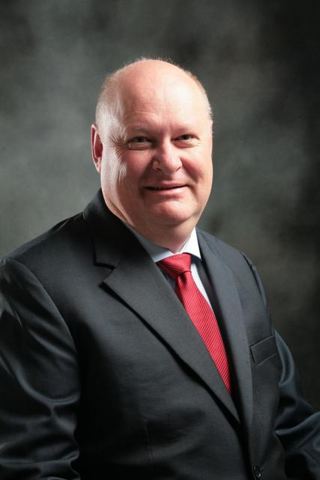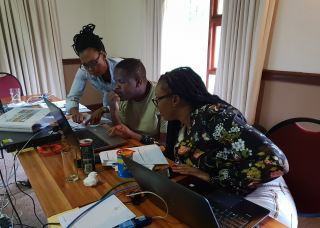Council of Events Professionals Africa to become part of SACIA
The South African Communications Industries Association (SACIA) has announced that the Council of Events Professionals Africa (CEPA) will be reconstituted as a special interest group under the SACIA umbrella.
CEPA was established in 2014 as the events industry’s Professional Body to develop and award professional designations to individuals working in the events industry. Originally formed as a three-way partnership between the Exhibition and Event Association of Southern Africa (EXSA), the International Festivals and Events Association (IFEA) Africa and the Southern African Association for the Conference Industry (SAACI), the Council (CEPA) has broad buy-in from members of all three associations, and the CEPA Board members appointed by the founding associations will continue to oversee activities through their appointment to a governing council.
SACIA has been instrumental in establishing and implementing professional standards and ethical business practices across the Communications Industries for the past 10 years. The journey has included the development and roll-out of professional designations for practitioners in the Audio-Visual, Broadcast and Live Events sectors – traditionally areas in which experiential learning is more prevalent than formal qualifications. SACIA’s objective is to provide clearly defined career pathways for individuals working in these areas, to encourage a commitment to lifelong learning, and to protect the public against unethical and/or unprofessional behaviour from certified members.
Along with the professional designations already available, SACIA will now proceed to develop and register new professional designations for the Event Management sector as well. This will provide for a formal recognition of competencies for professionals working as Event Co-ordinators, Event Managers and Event Directors, including related service providers across both small- and large-scale events in southern Africa. The events industry includes conferences, exhibitions, festivals and awards functions but also extends to weddings, funerals, sports days, social excursions, fund-raising events and much more. The baseline standard outlined in the various Professional Designation levels can be applied to all industry professionals working in the events industry, thereby creating new opportunities for individuals who may have been marginalised and/or denied access to commercial opportunities in the past.
Events practitioners will soon be able apply for a designation to suit their level of expertise by submitting the relevant documentation and undertaking an online competency assessment through SACIA. Demonstrable proof of competency affords their clients’ peace of mind, knowing that they will receive a professional standard of delivery.
“This is a fast-growing industry and we are excited to be moving forward with SACIA’, says Sue Gannon, ex GM of EXSA and now Director/Treasurer and Chair of the Skills, Certifications, Ethics and Disciplinary Committee for CEPA. “Many of the people working in the events industry do not have a formal qualification but they’ve built up their core knowledge by attending short courses and learning on the job. Why should they not have a formal designation if they have the competencies required? We need to recognise the value of prior learning and provide for career paths within our industry.”
Melanie Sillince, Director and Chair of Marketing & Secretariat, CEPA, says, “I believe that joining SACIA will fast track our dream of certifying our industry, offering a platform for creating jobs and providing much needed skills transfer and development without it costing those who wish to professionalise themselves, time and large sums of money.”
According to Glenn van Eck, CEPA Board Chairman, the pioneering work done by the Board of CEPA has created a wonderful foundation for its successful incorporation under the SACIA umbrella. “At the end of the day, our primary objective is to give events customers a greater opportunity to be assured of world-class delivery for their investment in professional businesses. It will also provide an opportunity for first-time entrants into the industry to be exposed to the knowledge and experience of mentors in the Events Industry and enable them to fast track their expertise as a new generation of event professionals.."
The merger with CEPA positions SACIA for coverage across the full spectrum of the events industry – including technical, operations and management, and opens up opportunities for SACIA members to tackle new challenges and prepare for industry advancements with a unified voice. The Association’s expanded structure will deliver enhanced value to all its stakeholders across the broader events industries, including live sound, audio-visual, event safety, cinematography, outside broadcast operations, lighting design, film and television, content creation and events management.
“Incorporating CEPA into our existing SACIA structures will allow us to expand our footprint and deliver real value to all stakeholders working in the events industry, from event organisers through to the technical crew responsible for turning dreams into reality,” concludes SACIA executive director Kevan Jones. “It’s about an entire industry sector coming together in the shared pursuit of excellence.”
Training offered on Internet Protocols within the AV industry
As part of the Association’s drive for Continuous Professional Development, SACIA contracted Mike Dhonau of Training for TV Ltd (UK) to provide training on the use of Internet Protocols in the broadcast environment for its members.
The programme has been adapted from a 3-day theoretical course, run in 2018, to a more comprehensive 4-day course which includes practical components. Known as Practical IP for Broadcast Engineers, the courses focus on Broadcast Engineers and Technicians who need to deal with new IP based systems and covers the basics of IP networking – with plenty of hands-on practice using switches and routers.
The aims of the course are:
- To give broadcast engineers confidence when working on IP based systems.
- To improve communication when working with IP network specialists.
- To provide a fundamental awareness of the issues around cybersecurity.
- To increase understanding of new broadcast/production IP standards and systems.
It is unlikely that anyone planning a new broadcast or production system will not use IP for all, or at least most of it. This means that broadcast engineers need to update their IP networking skills, as well as learning about the new broadcast IP standards and make cybersecurity a central part of their thinking and working.
They will need to work closely with IP network specialists when planning and designing the broadcast and production centres of the future. The training allows delegates to create an IP network with VLANs and resilience, generate and receive multicast audio and video streams, and examine the system using network monitoring tools.
It goes on to look at the new broadcast standards such as SMPTE 2022, SMPTE 2110 and AES67, as well as IEEE1588 PTP and considers the design of networks to carry high bit rate streams.
“Internet protocols have been a vital element in the broadcast and production chain for years, even decades - initially in office functions and databases, then in broadcast control. Finally, real-time audio and video began to be carried over IP, but this was mainly for contribution and distribution and usually used compression to reduce the data rate. Meanwhile, telecoms backbones were also moving to IP,” explains Mike.
“In the last 2 years, new standards, such as SMPTE 2110, have emerged to replace traditional broadcast signals such as SDI and AES3 with real-time IP audio and video within studio and broadcast centres. This is usually uncompressed and has a high bit rate, requiring at least 10GB Ethernet, and in many cases, up to 100GB. At the same time, audio and video timing is moving away from traditional Black & Burst and moving to IEEE1588 PTP (Precision Time Protocol).
Moving to IP creates great opportunities for flexibility in hardware design and workflows, making systems less dependent on location.” “Since the new standards are media format agnostic, we will be able to upgrade to new formats and to mix formats – from SD SDR to Ultra HD HDR without changing the underlying infrastructure. And as we move more signals to IP, the opportunities to make more use of virtualisation and the cloud, both and off premises is growing. Of course, with the increasing use of IP comes the increasing need to think about cybersecurity in all its forms,” he adds.
The programme is run over 4 levels:
- Introduction to IP in Broadcast and Media – 1 day,
- IP for Broadcast Operations – 3 days with practical
- IP for Broadcast Engineers – 3 days
- Practical IP for Broadcast Engineers – 4 days with practical.
Three successful training programmes have been conducted so far in 2019, with an additional four to follow in the months of August and September (Aug 13th, Aug 20th, Oct 8th and Oct 14th).
Although the training is being given in Gauteng, there is potential for it to be rolled out nationally If there is enough demand within the other regions. SACIA will communicate final dates and venues closer to the time.
Introducing COMMTREND
On 22nd-24th October 2019, the South African Communications Industries Association will be hosting its not-to-be-missed, multi-track Conference and Gala Dinner at Gallagher Estate.
COMMTREND is celebrating the Association’s achievements over the past 10 years and bringing its members together in a gathering that aims to deliver relevant insight and real value to the broadcast, AV, technical production and content creation markets. COMMTREND has been under discussion for many months and the result is a comprehensive 3-day programme of curated, educational content, tailored specifically to the industry sectors within SACIA.
As the recognised professional body for the industry SACIA can attract some of smartest minds available, so members can expect high-level presentations across a range of pertinent topics. However, it is also an interactive platform giving guests the opportunity to dig deeper into the issues shaping the future of the communications industry. There is plenty of opportunity for face-to-face engagement with experts willing to share their extensive knowledge and insight.
The conference aims to provide content to stimulate strategic thinking to negotiate the extreme rate of change within our sectors, examine the influences on our industry and assist us with planning for future directions. The previous SACIA conference was run alongside a small conference with around 30 exhibitors. In 2019, the exhibition component has been removed and the conference expanded to offer multiple streams of content.
The venue has also changed to a space that can accommodate the 500+ delegates expected from across the SADC region. COMMTREND kicks off with the first day being dedicated exclusively to SACIA’s Youth Development programme and pre-conference workshops. The Youth Development programme will feature several presentations focused on career opportunities for young people.
SACIA is already actively working with several Universities active in the communications sector but the youth content at COMMTREND will strongly focus on SACIA's vision for the future of the youth within the Association, exploring how the changing work environment will require new skill sets and instilling a commitment to continuing professional development.
The next two days are aimed at members already active within the industry; starting with a review of the mega-trends shaping our future before drilling down into the five different breakaway streams keeping discussions industry and individual-specific. Delegates have the choice of attending whichever knowledge track is of greatest interest to them and which will give them the most valuable take-away.
There are also sponsorship packages to allow sponsors to engage and interact with a highly targeted audience hungry for information. SACIA has created bespoke packages, across different price-points, all of which will include both pre and post-conference engagement. The objective is to secure sponsors with whom SACIA can build a long-term relationship that benefits the Association, the members and the sponsors in a WIN-WIN-WIN package.
Bringing the Students On Board
The Student Development project launched by SACIA in 2019 is already bearing fruit. Mpho Buntse was contracted in early 2019 to manage youth engagement within SACIA, in line with the Association’s vision of addressing the succession and skills shortage issues we experience in the Technical Communications industries. As the Project Manager for Youth Development; Mpho is the liaison point between higher learning institution stakeholders (students, academics and support units like student affairs), and the Association, to launch active chapters within all institutions relevant to the broadcast, film, media, sound, AV and live events sectors.
His role includes all youth engagement aspects of the association, including setting up a Young Professional’s Forum, driving and facilitating networks, community engagement, raising awareness amongst students about the professional designation opportunities available to members and instilling ethical as well as professional conduct amongst youth members.
The initiative is forging ahead with the establishment of on-campus Student Chapters. There are already Chapters on-site at six major Training Institutions around the country, namely: The North West University (Mafikeng Campus), the North West University (Vaal Campus), The Academy of Sound Engineering, AFDA, The University of the Witwatersrand and the University of Johannesburg; with more planned as the platform expands.
The aim is to gain input from these academic institutions and integrate with their offerings to provide the practical components (today commonly known as service learning programme) that make for well-rounded, employable industry-entrants. “Although we only started the process of engaging institutions about 3 months into the 2019 academic year, we have received overwhelming interest from both institutions and students," says Mpho.
“Students within the scope of SACIA’s mandate have demonstrated an eagerness to facilitate a single, non-partisan voice that will see them flourish as ethical professionals, post-graduation. There is a sense of relief that, finally, their sector has a professional body represented by a force of intergenerational, experienced role players, highlighting ethical standards.”
A Youth Development Day at Blandford Manor in April, which hosted champions of the initiative and students from partner institutions, uncovered a healthy appetite for technical development and set the stage for further engagement. As well as being the official launch of the Student Council, the day created opportunities for young people driving transformation in the industry to interact, share challenges faced by the youth and make recommendations on how to advance youth engagement.
It also gave chapter leaders the chance to meet, greet and network with some of the members and board of SACIA. SACIA’s student development plan operates in two ways. The Association, through the Student Chapters, facilitates the placement of Broadcast, Live Event, AV, Media, Film and TV student members with relevant industry players for their Work-Integrated Learning/Service Learning Component while they are still studying, so that the theoretical elements come to fruition on site. It also provides for engagement with industry, opportunities for mentorship arrangements, internship potential and future preferred employment opportunities.
The outcome will be an industry-backed student population, receiving practical support from industry leaders and graduates that are work-ready with access to industry networks. These students can interact with major players and form networks necessary for future partnerships. It gives them access to Mentorship, Work-Integrated Learning, Service Learning and Internship opportunities as well as the chance to hone their leadership skills to contribute towards the vision of the industry.
To make this benefit accessible to this section of the market, SACIA has discounted the Student Council membership fee to R100.00 (ex vat) per annum for Student Members. Already the Academy of Sound Engineering has registered their entire complement of Final Year students as SACIA Student Members, at no cost to the students. Mr. George Hattingh Junior, Director of Marketing and Communications for Academy of Sound Engineering (ASE) provides SACIA with the resources they need to make an impact within the student body.
“ASE is the largest training institution for Audio Technicians and Sound Engineers in South Africa and produces technicians in the Television and Screen Arts field. Our impact on the industry is significant and must form part of the professionalisation of the industry, so we welcome the opportunity to engage with SACIA at this level.” “Although it is still early days, our students have begun talking about the programme and are excited at their prospects.
The realisation that they are part of something bigger than just an institution and that the industry’s professional body recognises them and offers the space for growth and support, is invaluable,” he says.“We are also excited about the possibility of our professional staff to be involved and to gain their professional designations. As SACIA grows and its relevance and impact in our industry becomes more important, we hope to be a part of that successful growth.”
The Student Council anticipates tremendous growth in youth-oriented membership and the development of a SACIA membership that reflects the demographics of the country as well as the changing face of the sector. “We aim to have launched 50% of our national chapters within the first 5 years and to have obtained a clear mandate from the student and youth population about the future of the industry” says Mpho.
“By the end of 2019, we anticipate a fully-fledged Student Council and Young Professional’s Forum as strong components of SACIA. We are at the centre of the fourth industrial revolution, and we need to demonstrate our commitment to addressing the changing face of our future workforce by investing in the youth.”





